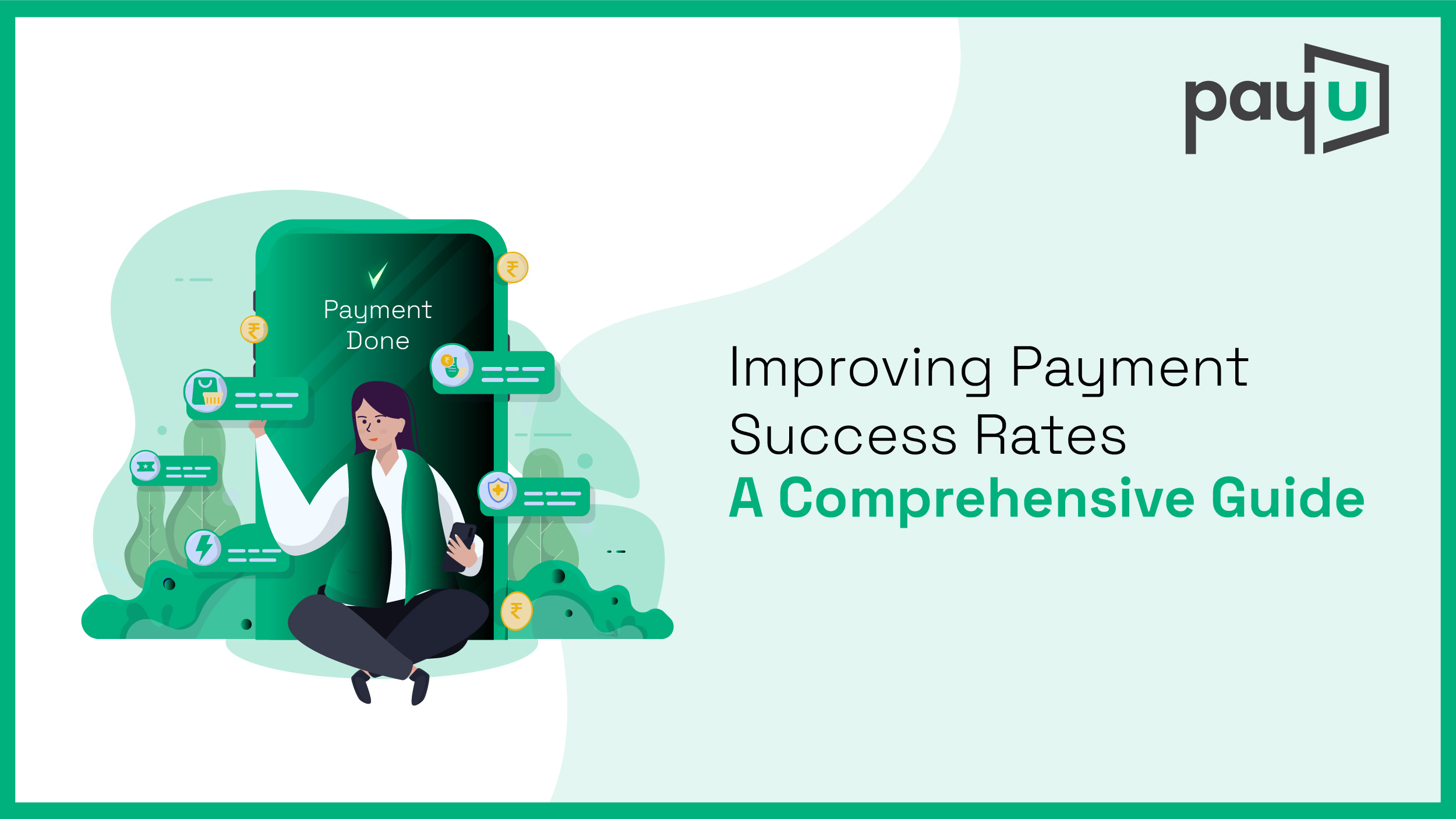
How to Improve Payment Success Rate in E-Commerce
Innovative products, a good marketing campaign, sturdy logistics, etc., go a long way in ensuring your online business success. But here’s another factor that’s often ignored and can make customers give up their purchase midway—payment success. A customer expects a seamless experience throughout, and if they experience payment failure at the checkout stage, they are likely not to go through with the purchase out of frustration. Because of this, a huge 60% of customers abandon their shopping carts.
Thus, it’s important for you to understand, address, and overcome payment failures for a thriving e-commerce journey.
| Table of Contents What is Payment Success Rate? Why is Payment Success Rate Important for E-Commerce Businesses? Common Reasons for Payment Failures How you can Improve Payment Success Rate Choosing the Right Payment Gateway Partner Conclusion FAQs |
Understanding Payment Success Rate
Your payment success rate is basically the share of transactions that are actually completed out of all the transactions customers try. It’s an effective way to tell if your payment checkout flow is running smoothly. If that rate stays high, chances are your customers are happy, the money’s coming in reliably, and people feel good about coming back. But if it starts decreasing, there’s a possibility of an issue blocking the payments, which you need to fix ASAP.
Why is Payment Success Rate Important for E-Commerce Businesses?
When payments fail, it’s not just about losing a sale right then and there. Customers get annoyed, carts get abandoned, and negative reviews can start popping up. In the long run, all these small frustrations will make the customer trust you less and less and hurt your brand loyalty.
But the real trouble comes when these payment glitches continue. They mess up your cash flow, make inventory tracking complicated, and create headaches for your accounting team. Also, if buyers keep facing payment problems, they will start shopping somewhere else, and you will lose even the most loyal customers.
Common Factors that Affect Payment Success Rate
Why do payments fail in the first place? There are many reasons and they occur from different ends—users and payment gateway. Here’s a look at each:
Issues from the User or Customer’s Side:
Insufficient Amount: When the user’s account doesn’t have enough money to complete the payment.
Incorrect Payment Details: Errors in card number, expiry date, CVV, or billing address.
Limitations on Card: Some cards have restrictions on online or international transactions. If users aren’t aware of these, their payments may be blocked.
Expired Cards: Using cards that are no longer valid lead to an automatic rejection.
Bank Account Restrictions: Just like cards, certain bank accounts may restrict online payments or large transaction amounts.
Connectivity Problems: A slow or unstable internet connection can interrupt the transaction process and cause it to fail.
Issues at the Payment Gateway-Level:
Payment failures at the gateway level are not very common, but they can still take place. Here’s how:
Technical Issues:
There are many issues like server downtime, system maintenance, and software errors that interrupt the payment gateway and transaction flow.
Issues from the Bank’s End:
The transaction may fail due to server outages or scheduled maintenance at the issuing bank. If the bank is temporarily unavailable, payments cannot be processed.
Processor-Level Failures:
The transaction may also break down at gateway payment processing due to technical errors, network overload, or complications with third-party services that support the payment infrastructure.
Regulatory and Compliance Barriers:
Transactions can also be blocked if they do not meet regulatory requirements such as data verification standards mandated by local or international authorities.
Fraud Detection Flags:
Most payment systems include fraud prevention tools. At times, these systems may incorrectly identify a genuine transaction as suspicious, which will make the bank decline it.
How to Improve Payment Success Rate
Improving your payment gateway success rate isn’t about a single solution but needs to be tackled from different aspects:
Improving Technical Infrastructure: Make sure your payment setup is reliable, can be scaled, and is regularly checked for bugs. Also, use real-time monitoring so if something breaks, you catch it fast. Employ real-time monitoring to detect and resolve issues promptly.
Enhancing User Experience: Provide clear instructions for entering payment details and highlight common errors. Consider features like autofill and form validation.
Offering Multiple Payment Methods: Customers today use multiple payment methods. Offer them various options—credit cards, debit cards, wallets, UPI, buy-now-pay-later (BNPL), etc.
Reducing False Declines: Review your fraud detection parameters to ensure legitimate transactions don’t get flagged unnecessarily.
Retry Mechanisms: Integrate tools that automatically retry failed transactions to capture revenue that might otherwise be lost.
Regular Analytics and Reports: Use data to pinpoint frequent causes of failure and take corrective actions. Consistency and customer-first strategies are key here.
Choosing the Best Payment Gateway Partner
The payment gateway partner you opt for can determine the checkout experience. Look for these qualities:
Reliability and Uptime: Pick gateways known for stability and minimal downtimes.
Wide Integration: Choose one that supports various payment methods and currencies.
Security Features: Ensure high-quality encryption and compliance with regulations like PCI DSS.
Analytics Capabilities: Opt for gateways that provide detailed data insights to track performance.
Local Adaptability: A gateway that understands local payment preferences can be invaluable, especially for international businesses.
Conclusion
Payment failures can be detrimental for online businesses, but they don’t have to be. By understanding payment success rates, addressing common issues, implementing effective strategies, and choosing the right partners, you can ensure smooth transactions for your customers. Improving payment success is a journey, but each step taken will bring your business closer to thriving in today’s digital era.
FAQs
Q1: How can I monitor my payment success rate?
Use analytics tools provided by your payment gateway or third-party platforms to track transaction success.
Q2: How often should I test my payment systems?
Monthly checks are ideal, with additional testing after updates or changes.
Q3: Can a payment gateway impact cart abandonment rates?
Yes! A smooth payment process lowers the chances of abandonment due to frustration or failed transactions.

